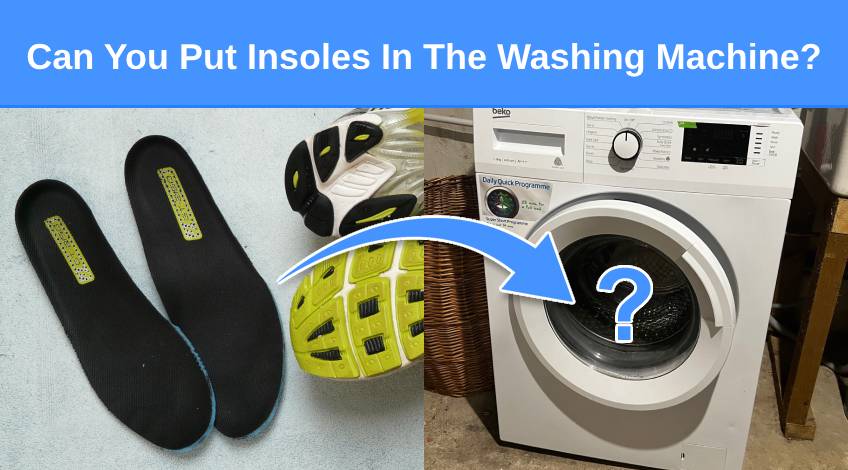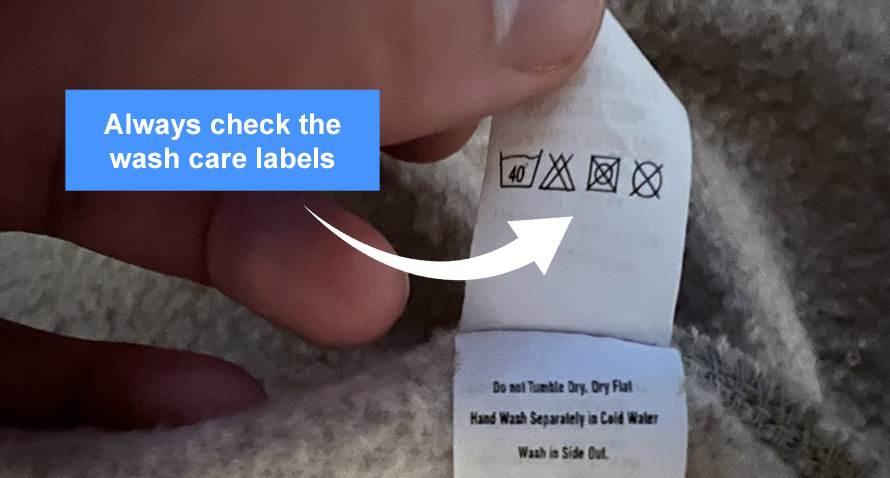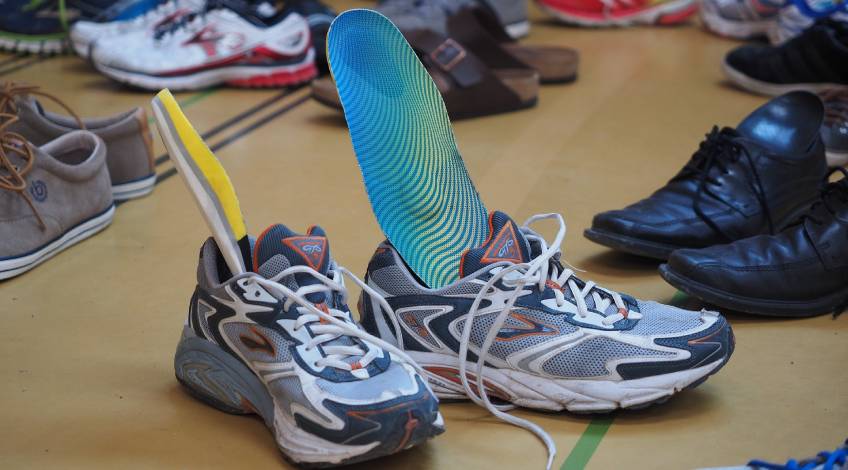
Can You Put Insoles In The Washing Machine?
Generally, it is not a good idea to put insoles inside the washing machine, however it does depend on the material the insole is made from.
Rubber and leather insoles should not be machine washed as the heat and agitation can damage them. However, foam insoles might survive a spin in the machine if placed in a delicate cycle within a mesh laundry bag. When in doubt, opting for handwashing is the safest route.
But there’s more to it than just that – as you read on, you’ll find advice on caring for your insoles, including how to effectively remove odours, disinfect, and even handle non-removable insoles.
What You Need To Know Before Cleaning Insoles

Before attempting to clean your insoles, always check the product label or manufacturer website for care instructions specific to the materials used.
How To Clean Insoles By Hand
Hand washing allows you to closely monitor the insoles during cleaning while minimising damage. Here are some handy techniques:
Hand Washing With Washing Up Liquid
Work a small amount of washing up liquid into warm water. Gently scrub insoles with a soft brush, then wipe away excess moisture with a cloth. Take extra care when cleaning leather insoles to avoid damage, being mindful not to use too much water for leather insoles. Air dry completely, avoiding any heat sources.
Removing Odours With Bicarbonate Of Soda

Place insoles inside a sealed bag or container with enough bicarbonate of soda to coat them. Leave overnight, then remove the soda by brushing or vacuuming. The bicarbonate of soda will naturally deodorise the insoles.
Disinfecting With Isopropyl Alcohol (or vinegar/hydrogen peroxide)
Mix equal parts isopropyl alcohol (rubbing alcohol) and water in a spray bottle. If you’re using vinegar or hydrogen peroxide, use a 70% solution diluted with 30% water.
Lightly spray onto insoles and let air dry completely before returning to shoes.
How To Properly Dry Insoles

When drying insoles after cleaning, air drying works best. Avoiding direct heat during the drying process is crucial as it can lead to warping, adhesive softening, or layer detachment. Opting for air drying maintains the insoles’ structure and effectiveness.
How Do You Clean Non-Removable Insoles?
For insoles that can’t be taken out, a balanced mixture of water and isopropyl alcohol can cleanse, deodorise, and kill bacteria. Use a cloth or a spray bottle for application and allow them to air dry, avoiding direct sunlight.
SEE ALSO: What Setting Do You Wash Shoes On? (& how to dry them after)
Frequently Asked Questions
Sole insoles are washable, but it depends on their material. While foam insoles can often be machine washed on a delicate cycle within a mesh laundry bag, rubber and leather insoles should not be machine washed due to the risk of damage from heat and agitation. Hand washing is recommended for materials that are sensitive to machine washing.
To clean stinky insoles, you can use bicarbonate of soda (baking soda). Place the insoles in a sealed bag or container with enough bicarbonate of soda to coat them thoroughly. Leave them overnight, then brush off or vacuum the soda. This method naturally deodorises the insoles.
Yes, baking soda can be used to clean insoles, not just for deodorising but also for light cleaning. Sprinkle a light layer of baking soda over the insoles and let it sit for a few hours before brushing it off. This can help remove light stains and dirt in addition to eliminating odours.
Also, follow us on Pinterest ...



